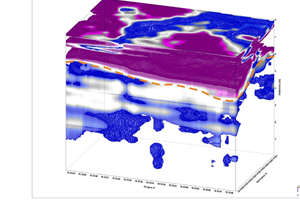The georadar method, otherwise known as GPR (Ground Penetrating Radar), belongs to a class of electromagnetic geophysical methods that analyze the changes of an electromagnetic wave injected into the ground. The transmitting antenna emits a wave in the subsurface that is reflected at the boundary between two layers having different dielectric constants and then is recorded by the receiving antenna. The energy of the reflected pulse is proportional to the difference between the dielectric constants of the two media.

